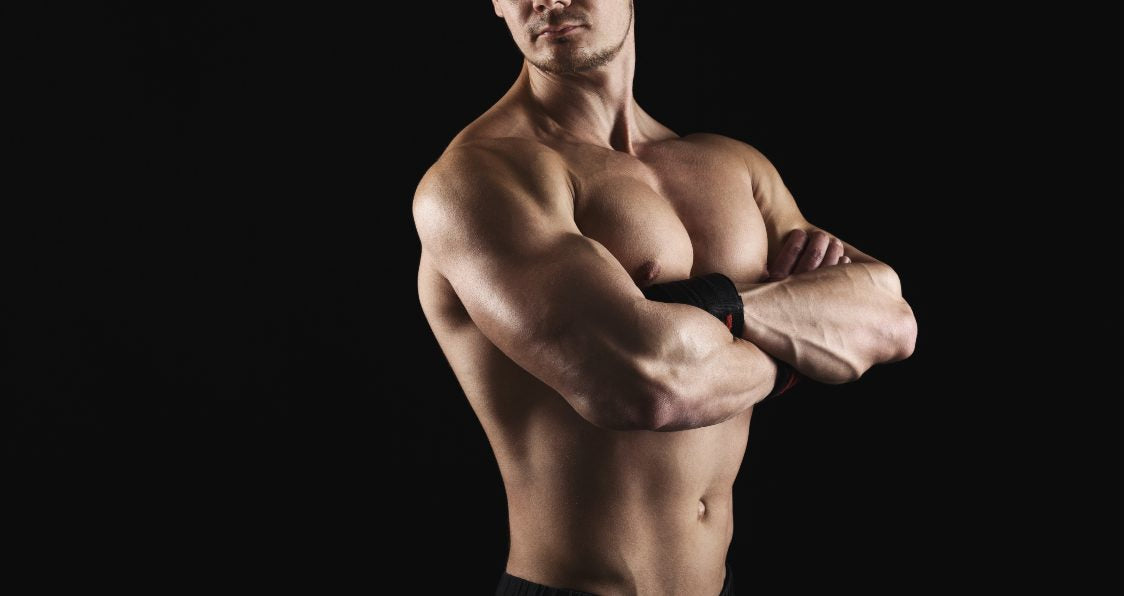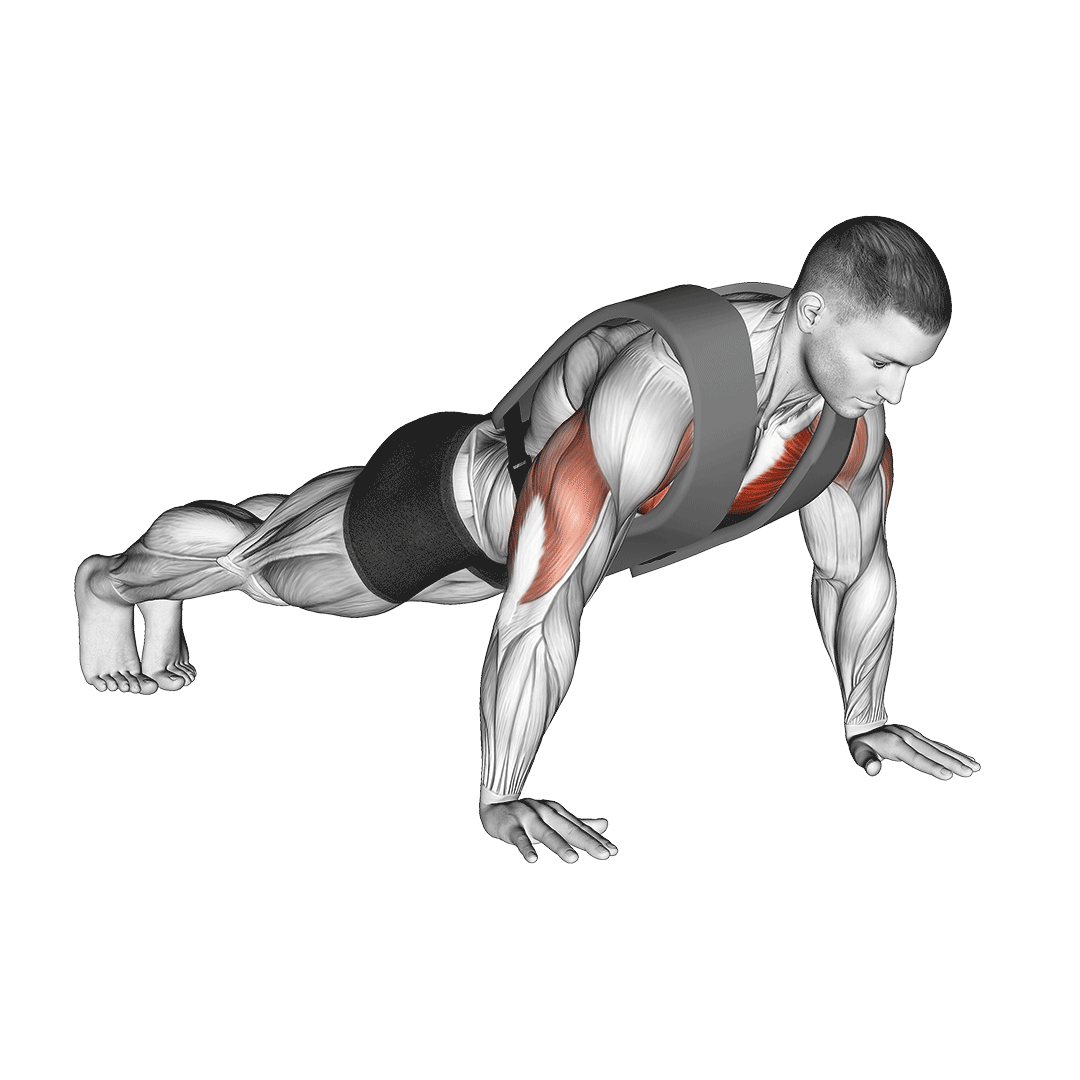In the realm of strength training, the shoulders stand as a pivotal focal point, bearing the dual responsibility of facilitating functional movement and contributing to aesthetic appeal. This comprehensive guide aims to illuminate the significance of cultivating robust shoulder muscles and introduces the role of kettlebell isolation exercises in achieving targeted and effective shoulder training.
Understanding Shoulder Anatomy
Embarking on the journey of a kettlebell-based shoulder workout demands a profound understanding of the intricacies of shoulder anatomy. Your shoulders are a complex network of muscles and joints that work in tandem to facilitate a wide range of movements, from lifting and pushing to reaching and rotating. Therefore, before you engage in targeted exercises, it's crucial to lay a solid foundation by comprehending the nuanced composition of this vital area.

The Shoulder Muscle Groups
The shoulder comprises several key muscle groups, each playing a distinctive role in its overall function. The primary muscles include:
Deltoids, These are the muscles responsible for the rounded contour of your shoulders. The deltoids consist of three parts — the anterior (front), medial (middle), and posterior (rear) deltoids — and contribute to various shoulder movements.
Rotator Cuff Muscles, Comprising the supraspinatus, infraspinatus, teres minor, and subscapularis, the rotator cuff muscles play a critical role in stabilising the shoulder joint and enabling rotational movements.
Trapezius, Extending down the back and neck, the trapezius is a large muscle that supports the upper spine and assists in shoulder movement and stability.
Rhomboids, Positioned between the spine and the shoulder blades, the rhomboids aid in scapular retraction and play a role in maintaining proper posture.
Benefits of Kettlebell Isolation Exercises
The crux of effective shoulder training lies in the strategic incorporation of isolation exercises. Within this realm, kettlebell exercises such as the Turkish Get Up, Thruster/Squat, Shoulder Push Press, Clean and Press, and Shoulder Press take center stage.
Each exercise is carefully designed to target specific shoulder muscles, emphasising a synergistic blend of isolation and compound movements for comprehensive development.
Warm-Up Techniques
Dynamic Stretching
Perform dynamic stretches that mimic the movements of the workout, such as arm circles, leg swings, and torso twists. This helps increase flexibility and blood flow.
Joint Mobilisation
Incorporate gentle joint movements to improve range of motion. This is particularly important for the shoulders, given their complex structure.
Light Cardio
Include 5-10 minutes of light cardio, such as jumping jacks or jogging in place, to raise your heart rate and increase body temperature.
Specific Shoulder Activation
Prioritise exercises that specifically target the shoulder muscles in your warm-up, activating the muscles you'll be using during your workout.
By integrating these tips into your kettlebell shoulder workout routine, you can enhance the effectiveness of your training, support muscle development, and reduce the risk of injuries. Remember to tailor your approach to your individual fitness level and listen to your body throughout the process.
Essential Kettlebell Isolation Exercises
Achieving well-rounded shoulders is a fitness goal that not only enhances your overall physique but also contributes to improved strength and functionality. Incorporating kettlebell exercises into your workout routine can be an effective way to target and develop the shoulder muscles. In this guide, we will explore various kettlebell exercises specifically designed to promote well-rounded shoulders and discuss their benefits.
Straight Arm Overhead Kettlebell Hold
The Straight Arm Overhead Kettlebell Hold introduces a deceptively simple yet powerful exercise that engages shoulder muscles, enhances stability, and activates the core with a seamless, straight-arm posture
Benefits
- Isometric contraction of shoulder muscles.
- Enhances shoulder stability.
- Engages core muscles.
How to Perform
- Start by selecting an appropriate kettlebell weight.
- Hold the kettlebell with a straight arm directly overhead.
- Keep the shoulder blades down and engage the core.
- Maintain the position for a set duration, gradually increasing over time.
Kettlebell Windmill
The Kettlebell Windmill guides you through a fluid sequence that not only targets the entire shoulder girdle but also challenges obliques. This dynamic exercise not only improves flexibility but also enhances full-body coordination.
Benefits
- Improves shoulder mobility.
- Targets the entire shoulder girdle.
- Engages core muscles and obliques.
How to Perform
- Begin with the feet shoulder-width apart, kettlebell in one hand.
- Rotate the feet and hips slightly away from the kettlebell-holding side.
- Keep the arm with the kettlebell straight overhead.
- Lower the opposite hand toward the ground, maintaining a straight back.
- Return to the starting position, emphasising the use of shoulder muscles.
Kettlebell Turkish Get Up
The Kettlebell Turkish Get Up emerges as a foundational exercise, weaving intricate movements that not only sculpt muscles but also foster full-body coordination and control.
Benefits
- Develops stability and strength throughout the shoulder joint.
- Engages multiple muscle groups.
- Enhances proprioception and body awareness.
How to Perform
- Start lying on your back with a kettlebell in one hand.
- Use both hands to press the kettlebell directly above the shoulder.
- Follow a series of coordinated movements to stand up while keeping the kettlebell overhead.
- Reverse the movements to return to the starting position.
Kettlebell Shoulder Push Press
The Kettlebell Shoulder Push Press introduces an explosive movement that amalgamates shoulder strength with leg drive. This exercise not only targets the deltoids and trapezius muscles but also amplifies power and enhances explosive strength.
Benefits
- Targets the deltoids and trapezius muscles.
- Incorporates leg drive for additional power.
- Enhances explosive strength.
How to Perform
- Begin with the kettlebells at shoulder height.
- Perform a slight dip with the knees and use the legs to drive the kettlebells overhead.
- Lock out the arms at the top of the movement.
- Lower the kettlebells under control to the starting position.
Kettlebell Squat & Shoulder Press
The Kettlebell Squat & Shoulder Press emerges as a cardio-infused powerhouse. This exercise not only promotes cardiovascular fitness but also bolsters functional strength by synchronising lower body power with targeted shoulder muscle activation.
Benefits
- Combines lower body and shoulder muscle engagement.
- Boosts cardiovascular fitness.
- Promotes functional strength.
How to Perform
- Hold a kettlebell in each hand at shoulder height.
- Perform a squat, keeping the back straight.
- As you stand up, press the kettlebells overhead.
- Lower the kettlebells back to the starting position.
Kettlebell Clean and Press
The Kettlebell Clean and Press stands as a pinnacle of strength and coordination. This exercise targets the shoulders, upper back, and arms, enhancing power while incorporating a seamless transition from kettlebell swing to overhead press.
Benefits
- Targets the shoulders, upper back, and arms.
- Enhances power and coordination.
- Incorporates a full-body movement.
How to Perform
- Start with the kettlebell between your feet.
- Perform a clean by swinging the kettlebell to the shoulder.
- Press the kettlebell overhead.
- Lower the kettlebell back to the starting position.
Kettlebell Shoulder Press
The Kettlebell Shoulder Press refines traditional shoulder training. This exercise, executed with precision, focuses on improving shoulder strength and endurance while allowing for unilateral training, ensuring a balanced and targeted approach to shoulder development
Benefits
- Isolates the shoulder muscles.
- Improves shoulder strength and endurance.
- Allows for unilateral training.
How to Perform
- Begin by holding a kettlebell in one hand at shoulder height.
- Press the kettlebell overhead, fully extending the arm.
- Lower the kettlebell back to the starting position in a controlled manner.
Incorporating these kettlebell exercises into your fitness routine can contribute significantly to the development of well-rounded shoulders. Remember to choose a kettlebell with an appropriate weight, focus on proper form, and gradually increase intensity as your strength improves. Whether you're a beginner or an experienced fitness enthusiast, these exercises offer a versatile and effective way to sculpt and strengthen your shoulder muscles for a balanced and functional physique.
Kettlebell Shoulder Isolation Circuit
To bring theory into practice, a sample circuit is provided, incorporating Turkish Get Up, Thruster, Shoulder Push Press, Clean and Press, and Shoulder Press. The recommended sets and repetitions serve as a blueprint for an effective and efficient workout, accommodating various fitness levels.
Here's a condensed overview:
Circuit Components
Turkish Get Up
Reps:
Beginners: 2x5 per side
Intermediate: 3x8 per side
Advanced: 4x10 per side
Thruster/Squats
Reps:
Beginners: 3x8
Intermediate: 4x10
Advanced: 5x12
Shoulder Push Press
Reps:
Beginners: 3x8
Intermediate: 4x10
Advanced: 5x12
Clean and Press
Reps:
Beginners: 2x8
Intermediate: 3x10
Advanced: 4x12
Shoulder Press
Reps:
Beginners: 3x8
Intermediate: 4x10
Advanced: 5x12
Execution Guidelines
- Perform exercises consecutively with minimal rest.
- Allow 60-90 seconds between sets.
- Gradually increase kettlebell weight.
- Prioritize proper form over heavy weights.
Adaptability
Beginners: Start with manageable weights, focusing on mastering form.
Intermediate: Increase intensity by adding sets or reps.
Advanced: Challenge with heavier kettlebells and more sets.
Consistency with this circuit will contribute to strong, sculpted shoulders. Always prioritize form and consult professionals if needed.
Tips for Effective and Safe Training
- Ensure you maintain proper form throughout each kettlebell exercise. Incorrect form can lead to injuries and diminish the effectiveness of the workout.
- Begin with a weight that challenges you but allows for proper execution of each movement. Gradually increase the weight as your strength and proficiency improve.
- Focus on controlled, deliberate movements rather than rushing through repetitions. This enhances muscle engagement and reduces the risk of injury.
- Dedicate time to a dynamic warm-up before starting your kettlebell shoulder workout. Activities like arm circles, shoulder rolls, and light cardio increase blood flow and prepare your muscles for the workout.
- If you're new to kettlebell training, start with basic exercises and progressively advance to more complex movements. This gradual approach reduces the risk of overtraining or strain.
- Listen to Your Body: Pay attention to any discomfort or pain during exercises. If you experience persistent pain, modify the movement or consult a fitness professional to ensure you're performing the exercises correctly.
Incorporate various types of kettlebells into your workouts to maximize versatility and effectiveness. You can choose from a range of options including Adjustable Kettlebells for customizable resistance, Competition Kettlebells designed to meet professional standards, and Powder Coat Kettlebells known for their durability and grip. Each type offers unique benefits tailored to your fitness goals.
Nutrition for Shoulder Development
Adequate Protein Intake
Protein is essential for muscle repair and growth. Ensure you consume enough protein-rich foods like lean meats, poultry, fish, eggs, and plant-based sources like beans and tofu.
Balanced Diet
Include a variety of nutrients in your diet, including carbohydrates, fats, vitamins, and minerals. A well-balanced diet supports overall health and provides the energy needed for intense workouts.
Hydration is Key
Staying hydrated is crucial for optimal performance and recovery. Drink water throughout the day, especially before and after your workout.
Pre-Workout Nutrition
Consume a balanced meal or snack containing carbohydrates and protein about 1-2 hours before your workout. This provides the energy needed for your training session.
Post-Workout Nutrition
Refuel with a combination of protein and carbohydrates within the first hour after your workout to support muscle recovery and replenish glycogen stores.
Recovery Strategies
Adequate Sleep
Ensure you get enough quality sleep, as this is when your body repairs and grows stronger. Aim for 7-9 hours of sleep per night.
Active Recovery
Include light activities such as walking or gentle stretching on rest days to promote blood flow and aid recovery.
Foam Rolling and Stretching
Incorporate foam rolling and stretching into your routine to alleviate muscle tightness and improve flexibility.
Rest Days
Give your muscles time to recover by scheduling regular rest days. Overtraining can lead to fatigue and increased risk of injury.
Ice and Compression
In case of soreness or inflammation, consider using ice packs and compression techniques to reduce swelling and promote recovery.
Case Studies or Success Stories
Real-life examples of individuals who have achieved well-rounded shoulders through a kettlebell-centric routine are shared. These stories not only inspire but also provide practical insights into the transformative power of the outlined exercises and strategies.
Sarah's Shoulder Transformation
Sarah, 32, faced shoulder pain due to prolonged desk work. Seeking relief, she incorporated kettlebell exercises like Turkish Get Ups and Shoulder Press.
In six weeks, Sarah's shoulder mobility improved, and pain diminished. Kettlebell training not only strengthened her shoulders but also enhanced her overall posture.
Sarah says herself,"I never thought kettlebells could make such a difference! My shoulders feel stronger, and the pain is now a thing of the past. Kettlebell training has transformed my shoulders and my overall fitness journey."
Mark's Journey to Shoulder Stability
Mark, 45, struggled with shoulder stability and sought to enhance upper body strength. Integrating kettlebell exercises like Thrusters and Shoulder Push Press, he progressively increased intensity.Over ten weeks, Mark experienced remarkable improvements in shoulder stability and strength. Kettlebell exercises enhanced muscle engagement and provided newfound confidence.
An overjoyed Mark says,"Kettlebells have been a game-changer for me. My shoulders feel more stable than ever, and the variety in exercises keeps things exciting. Kettlebells have become my go-to for achieving both functional strength and aesthetics."
Conclusion
In the realm of strength training, shoulders play a vital role in both form and function. This guide highlights the essence of robust shoulder muscles, unveiling the power of kettlebell isolation exercises in targeted shoulder strength.
Understanding shoulder anatomy sets the stage for effective kettlebell workouts. The focus on isolation exercises like the Turkish Get Up, Thruster, Shoulder Push Press, Clean and Press, and Shoulder Press ensures a precise approach to comprehensive shoulder development.
A dynamic warm-up, incorporating stretching, joint mobilisation, and specific shoulder activation, becomes a pivotal ritual. These practices seamlessly enhance the efficacy of kettlebell training, fostering muscle development, and minimising the risk of injuries. As you embrace kettlebell mastery, prioritise form, listen to your body, and relish the transformative journey toward resilient and well-rounded shoulders.










